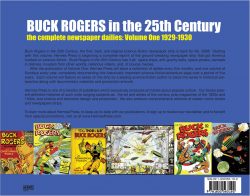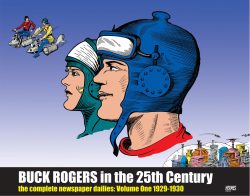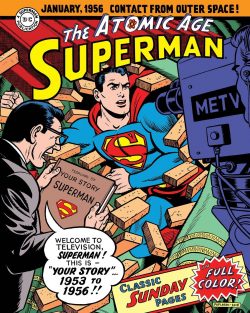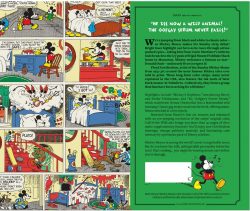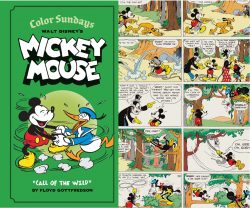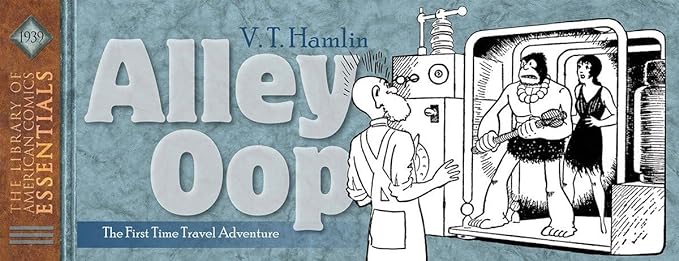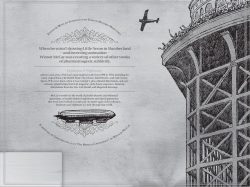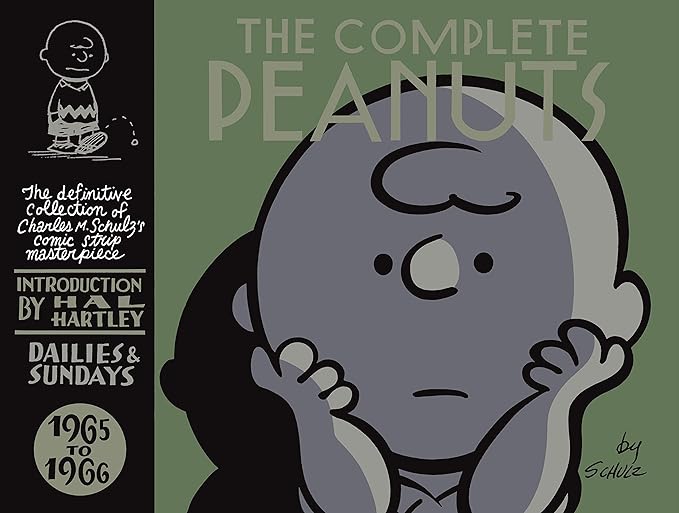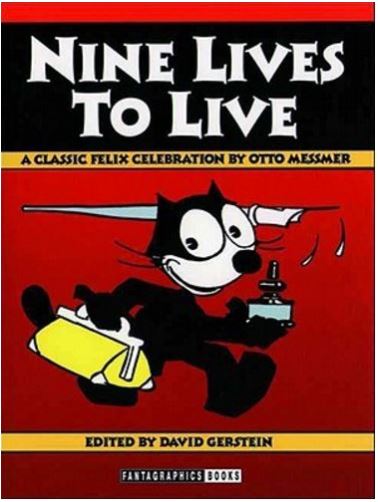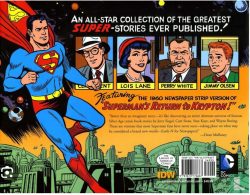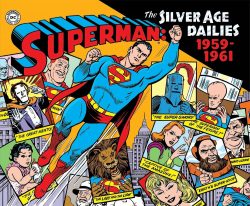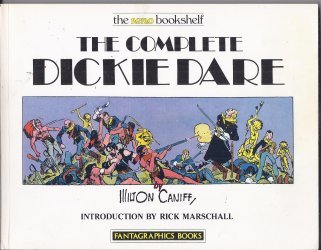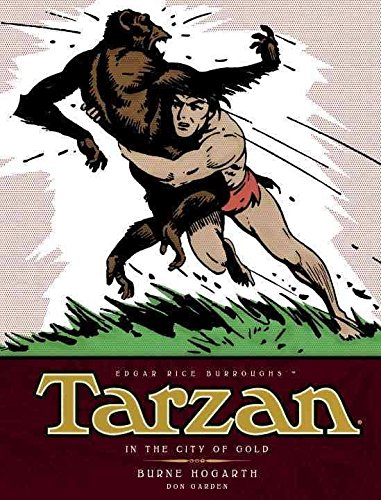
By Burne Hogarth and Don Garden (Titan Books)
ISBN: 978-1-78116-317-7 (HB)
Modern comics and graphic novels evolved from newspaper comic strips. These daily pictorial features were – until relatively recently – extremely popular with the public and highly valued by publishers who used them as a powerful weapon to guarantee and even increase circulation and profits. From the earliest days humour was paramount; hence the terms “Funnies” – and of course, “Comics”.
The 1930s saw an explosion of action and drama strips launched with astounding rapidity and success. Not just strips but actual genres were created in that decade which still impact on not just today’s comic-books but all our popular fiction. Despite the odd ancestor or precedent like Roy Crane’s Wash Tubbs (comedic when it began in 1924, but gradually moving through mock-heroics to light-action and becoming a full-blown adventure serial with the introduction of Captain Easy in 1929), the majority of strips in production were feel-good humour strips with the occasional child-oriented fantasy.
The full-blown adventure serial strip started on January 7th 1929 with Buck Rogers and Tarzan launching on the same day. Both were adaptations of pre-existing prose properties – although the Ape-Man had already conquered the silver screen – and their influence changed the shape of the medium forever. In terms of sheer quality of art, the adaptations of Edgar Rice Burroughs’ novels starring jungle-bred John Clayton, Lord Greystoke by Canadian commercial artist Harold “Hal” Foster were unsurpassed, and the strip became a firm favourite of the reading masses, supplementing movies, books, a radio show and ubiquitous advertising appearances.
As fully detailed in Tarzan historian/author Scott Tracy Griffin’s informative overview ‘Burne & Burroughs: The Story of Burne Hogarth and Edgar Rice Burroughs’, Foster initially quit the strip after the10-week adaptation of Tarzan of the Apes. He was replaced by Rex Maxon, but returned (at the insistent urging of Edgar Rice Burroughs) when the black-&-white daily was expanded to include a lush, full colour Sunday page of new tales.
Leaving Maxon to cater the Monday through Saturday series of novel adaptations, Foster produced the Sunday page until 1936 (233 weeks) after which he momentously moved to King Features Syndicate and created his own weekend masterpiece. Prince Valiant in the Days of King Arthur debuted on February 13th 1937. Once a four month backlog of material he had built up was gone, Foster was succeeded by a precociously brilliant 25-year old artist named Burne Hogarth: a young graphic visionary whose superb anatomical skill, cinematic design flair and compelling page composition revolutionised action/adventure narrative illustration.
The galvanic modern dynamism of the idealised human figure in comic books is directly attributable to Hogarth’s pioneering drawing and, in later years, educational efforts.
When he in turn finally left the strip, Hogarth found his way into teaching as co-founder – with Silas H. Rhodes – of the Cartoonist and Illustrators School for returning veterans. This became the New York School of Visual Arts and Hogarth produced an invaluable and inspirational series of art textbooks including Dynamic Anatomy and Dynamic Figure Drawing, shaping generations of aspiring pencillers. I can see my own well-worn copies from where I sit typing this.
In the early 1970s, Hogarth was lured back to the leafy domain of legendary Lord Greystoke, producing two magnificent volumes of graphic narrative in the dazzling style that had captivated audiences more than 30 years previously. Large bold panels, vibrantly coloured, with blocks of Burroughs’ original text, leapt out at the reader in a riot of hue and motion as they retold the triumphant, tragic tale of an orphaned scion of British nobility raised to puissant manhood by Great Apes in Tarzan of the Apes and Jungle Tales of Tarzan.
Burroughs cannily used the increasingly popular strip feature to cross-market his own prose efforts with great effect. Tarzan and the City of Gold was first serialised in pulp magazine Argosy in 1932 and released in book form the following year. So by May 17th 1936, Foster’s new and unconnected Tarzan in the City of Gold could be described as a brand new adventure on one hand, whilst boosting already impressively book sales by acting as a subtle weekly ad for the fantastic fantasy novels.
As discussed and précised in ‘Hal Foster’s Tarzan in the City of Gold – the Story So Far’, the illustrator and regular scripter Don Garden’s final yarn began with the 271st weekly page: revealing how the wandering Ape-Man had stumbled upon a lost outpost built by ancient refugees from Asia Minor in a desolate region of the “Dark Continent”.
The city of Taanor was so rich in gold that the material was only useful for weather-proofing roofs and domes of houses, but when white ne’er-do-wells Jim Gorrey and Rufus Flint discover the fantastic horde they marshalled a mercenary army, complete with tanks and aircraft to plunder the lost kingdom. Tarzan, meanwhile, had become war-chief of noble King Dalkon and his beautiful daughter Princess Nakonia and determined to use every trick and stratagem to smash the invaders…
After 51 epic weekly episodes, Foster was gone and we pick up the story of ‘Tarzan in the City of Gold’ (episodes #322-343, 9th May to October 3rd 1937) as the drama takes a bold new direction when the embattled Jungle Lord leads a slow war of attrition against the invaders whilst simultaneously recruiting a bizarre battalion of beasts comprising apes, lions and elephants to crush the greedily amassed armaments of 20th century warfare with fang and claw, sinew and muscle…
In those halcyon days the action was non-stop and, rather than cleanly defined breaks, storylines flowed one into another. Thus, Tarzan allowed the victorious Taanorians to believe he had perished in battle and journeyed to familiar territory, revisiting the cabin where he had been born and the region where he was raised by the she-ape Kala – stopping to punish a tribe of humans hunting and tormenting his old family/band of apes. Then, Hogarth’s first full epic began.
‘Tarzan and the Boers Part I’ (pages #344-377, 10th October 1937 – 29th May 1938) sees the erstwhile Greystoke lured to the assistance of duplicitous chieftain Ishtak who craves the Ape-Man’s assistance in repulsing an “invasion” by white pioneers from South Africa.
It isn’t too long before Tarzan discovers Ishtak is playing a double game. Having sold the land in question to families led by aged Jan Van Buren, the avaricious king intends to wipe them out and keep his tribal territories intact…
When Tarzan unravels the plot he naturally sides with the Boers and, over many bloody, torturous weeks, helps the refugees survive Ishtak’s murderous campaign of terror to establish a sound, solid community of honest (white) farmers…
When Hogarth first took over he had used an affected drawing style mimicking Foster’s static realism, but by the time of ‘Tarzan and the Chinese’ (#378-402, 5 June – 20th November 1938) had completed a slow transition to his own tautly hyper-kinetic visual methodology, perfectly suited to the electric vitality of the ever-onrushing feature’s exotic wonders.
Here, after leaving the new Boer nation, Tarzan finds a vast, double-walled enclosure and – ever curious – climbs into a fabulous hidden kingdom populated by the descendants of imperial Chinese colonists.
Once again he was just in time to prevent the overthrow of the rightful ruler – firstly by rebels and bandits, then a treacherous usurper and latterly by invading African warriors – before slipping away to befriend another clan of Great Apes and be mistaken for an evolutionary missing link by Professor John Farr in ‘Tarzan and the Pygmies’ (#403-427, 27th November 1938 to 14th May 1939). However, the boffin’s nefarious guide Marsada knows exactly who and what the Ape-Man is and spends a great deal of time and effort trying to kill Tarzan, as payback for his destroying a profitable poaching racket years before. Most infuriatingly, the husky newcomer had caught the passionate fancy of Farr’s lovely daughter Linda…
Following an extended clash with actual missing links – a mountain tribe of primitive, bestial half-men – Tarzan and Linda fall into the brawny hands of magnificent (white) tree-dwelling viragos who all want to mate with a man who seems their physical equal. The trials and tribulations of ‘Tarzan and the Amazons’ (#428-437, 21st May-23rd July 1939) only ends when the jungle Adonis fakes his own death…
More relatively aimless perambulations bring the hero once more to the nascent homeland of his Afrikaans friends. ‘Tarzan and the Boers Part II’ (#438-477, 30th July 1939 – 28th April 1940) has him perfectly matched against cunning, truly monstrous villain Klaas Vanger. This wandering diamond hunter has discovered a mother-lode of gems on Jan Van Buren’s farm and, after seducing his way into the family’s good graces by romancing impressionable daughter Matea, he tries to murder them all. When this also fails, Vanger instigates a new war between settlers and natives, whilst absconding with a cache of diamonds and massacring a tribe of baboons befriended by Tarzan…
These vile acts lead to a horrific boom town of greedy killers springing up on Boer lands, compelling Tarzan, baby baboon Bo-Dan and hulking. tongue-tied lovelorn farmhand Groot Carlus to take a terrible but well-deserved vengeance on the money-crazed monster and his minions and rescuing crestfallen Matea from the seducer’s vile clutches…
Edgar Rice Burroughs was a master of populist writing and always his prose crackled with energy and imagination. Hogarth was an inspired intellectual and, as well as gradually instilling his pages with ferocious, unceasing action, layered the panels with subtle symbolism. Even vegetation looked spiky, edgy and liable to attack at a moment’s notice…
His pictorial narratives are all coiled-spring tension or vital, violent explosive motion, stretching, running, fighting: a surging rush of power and glory. It’s wonderful these majestic exploits are back in print – especially in such a lavish and luxurious oversized (330 x 254mm) hardback format – even if only to give us comic lovers and other couch potatoes a thorough cardio-vascular work-out. Nevertheless, I won’t be completely happy until all this wild wonderment is online too…
Beautifully rendered and reassuringly formulaic, these masterful interpretations of the utterly authentic Ape-Man are a welcome addition to any comics’ connoisseurs’ cupboard and you would be crazy not to take advantage of this beautiful collection; the first of five in the Complete Burne Hogarth Comic Strip Library.
Tarzan® & © 2014 ERB, Inc. All Rights Reserved. All images copyright of ERB, Inc 2014. All text copyright of ERB, Inc 2014.

